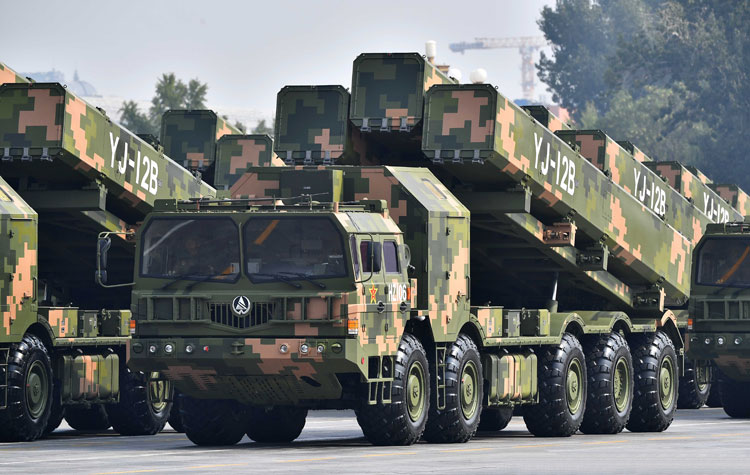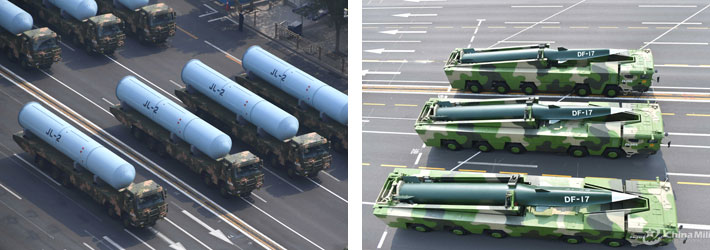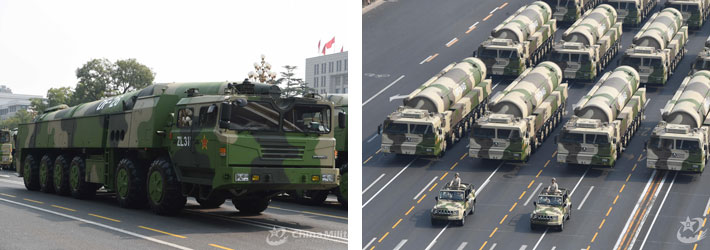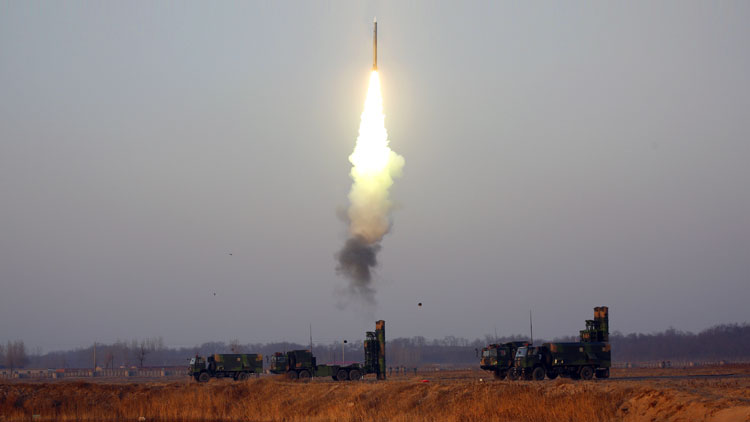INDIAN ARMED FORCES CHIEFS ON
OUR RELENTLESS AND FOCUSED PUBLISHING EFFORTS

SP Guide Publications puts forth a well compiled articulation of issues, pursuits and accomplishments of the Indian Army, over the years

I am confident that SP Guide Publications would continue to inform, inspire and influence.

My compliments to SP Guide Publications for informative and credible reportage on contemporary aerospace issues over the past six decades.
- Interim Defence Budget 2024-25 — An Analysis
- Union Defence budget 2024
- Indian Army: In quest of greater firepower and policy recommendations for gaps
- Indian Army Annual Press Conference 2024
- 6G will transform military-industrial applications
- Tata Boeing Aerospace Delivers 250 AH-64 Apache Fuselages, Manufactured in India
Midflight Missile Interception
There is no doubt that midflight missile interception technology is of great strategic significance and once fully developed, China’s midcourse anti-ballistic missile technology could change the balance of power
 |
The Author is Former Director General of Information Systems and A Special Forces Veteran, Indian Army |

With the battlefields getting swamped by drones, considerable research is on for the development of drones that can kill enemy drones and possibly eliminate the enemy swarm drone in its entirety without or in conjunction other air defence systems. But the missile threat has been there for long and a country like China has a concept of using missiles en-masse or in swarms as well to beat the enemy anti-missile systems. This is significant since China has an impressive array of missiles, the recent additions being three new cruise missiles (YJ-12B, YJ-18, and CJ-100), two ballistic missiles (JL-2 and DF-41), and a hypersonic glide vehicle (DF-17), in addition to the DF-31AG and DF-26.
On February 4, 2021, China conducted a test for intercepting and destroying an incoming missile during midflight, with China’s Ministry of National Defense declaring the exercise a success. The PLA authorities issued a no-fly warning near the Taiyuan Satellite Launch Centre in north China before the test. China is reportedly the second country to develop the technology to kill a missile midflight after the US. The US first deployed such a system in 2004 and its most recent successful test was in 2019. The ground-based midcourse defence system is intended to knock out incoming intercontinental ballistic missiles (ICBM) outside the Earth’s atmosphere, reducing collateral damage to ground targets. It aims to intercept the weapons while they are in inertial flight and their trajectory is stable and predictable.


Chinese citizens who witnessed the test posted photos and videos of the parabolic trail of the missile on social media. China announced its first successful interception attempt in 2010. Similar tests are known to have been carried out in 2013, 2014 and 2018. China did not release any details about the missile test exercise. China’s Ministry of National Defense said the test did not target any particular country but it was timed a day before US President Joe Biden approved extension of the Start II Treaty with Russia for nuclear arms control and vowed to engage Beijing on nuclear risk reduction and arms control. This led to speculation that China was perhaps sending some sort of signal to the Biden administration.
In all probability, China was signaling both the US and India amidst the ongoing India-China standoff in Eastern Ladakh especially since India has fast tracked the deployment of its longest range, most potent nuclear-capable ballistic missile Agni-V which has an estimated range of over 5,000 km. India is likely to deploy the Agni-V within 2021. In fact, media has quoted an un-named source close to the PLA stating that China’s midcourse anti-ballistic missile test, which could intercept an incoming nuclear warhead, may be intended as a warning to India by saying, “This is a technology that China has been developing for a long while. The Thursday (February 4) test could be aimed at warning India, which used to adopt nuclear blackmail strategy when dealing with China.”
According to analysts, China’s midcourse anti-ballistic technology as of now still cannot knock down nuclear missiles from the United States and Russia, as there is still a gap between the PLA and the other two nations. The Chinese test, however, was still a signal to Washington according to Macau-based military commentator Antony Wong Tong who says, “The US has been rapidly developing intermediate range ballistic missiles after quitting the INF, which is a threat to China,” Wong said, adding that even Taiwan was working on ballistic missiles that could reach in-land locations on the mainland.”

According to veteran PLA Senior Colonel Yue Gang, after 11 years of work, China‘s land-based system should be close to operational deployment and the experiment was probably a test of the credibility and efficacy of the technologies. He adds, “It was intended to protect the Chinese capital and nuclear launch silos from the US intercontinental ballistic missiles (ICBMs), which have been the biggest threat to us.”
There is no doubt that midflight missile interception technology is of great strategic significance because all ICBMs would be carrying nuclear warheads. Once fully developed, China’s midcourse anti-ballistic missile technology could change the balance of power but the questions are:
- one, how much has China perfected the technology since high altitudes and distances involved require multiple integrated reconnaissance and early warning platforms in space, at sea, and on the ground to detect and track incoming targets as well as control and guide interceptor missiles, and;
- two, if the current state of China’s midcourse anti-ballistic missile technology is not sufficient to intercept US and Russian ICBMs, to what extent would it be successful against India’s Agni-V?
China’s research and development in defence is always laced with propaganda but it is also putting in a lot of money and effort with President Xi Jinping’s ‘China Dream’ of dominating the world in the shortest timeframe. Admiral Charles Richard, Commander US Strategic Command has gone on record to say that a nuclear war with Beijing is a real possibility. Finally, India needs to take cognizance of these developments and rapidly develop capability of midflight missile interception against the whole range of Chinese missiles.





